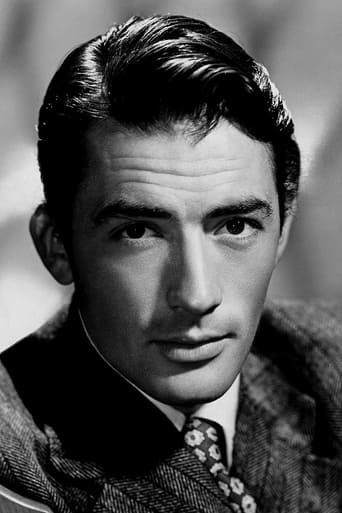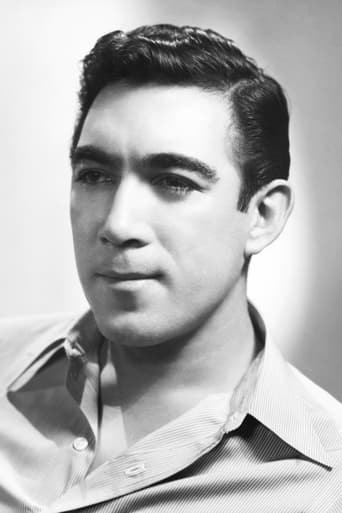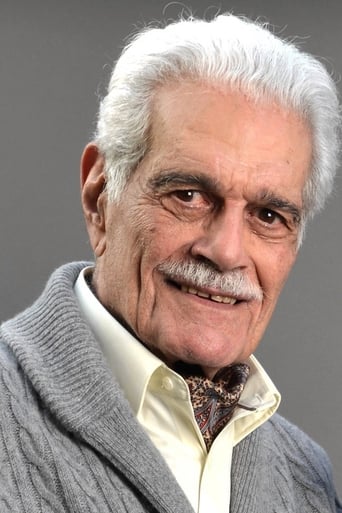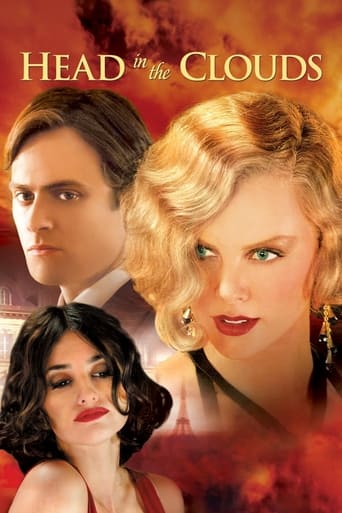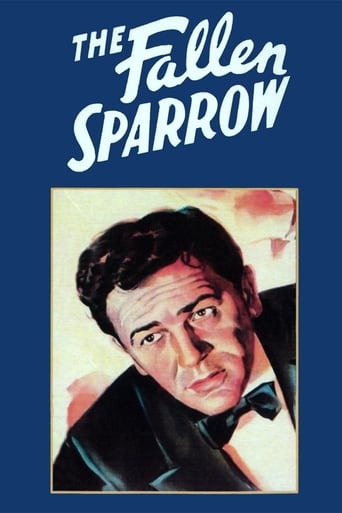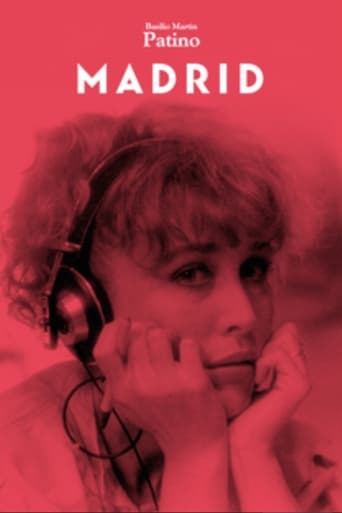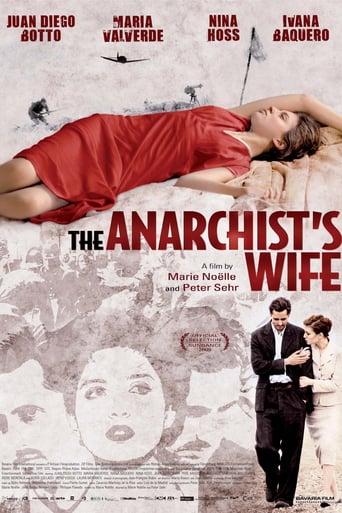
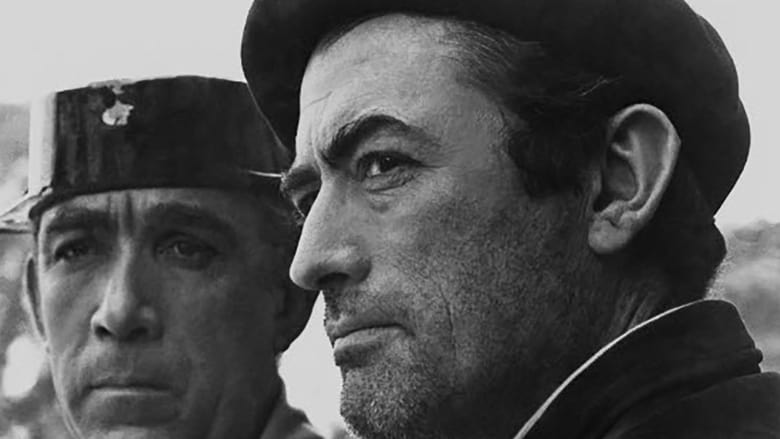
Behold a Pale Horse (1964)
Manuel Artiguez, a famous bandit during the Spanish civil war, has lived in French exile for 20 years. When his mother is dying he considers visiting her secretly in his Spanish home town. But his biggest enemy, the Spanish police officer Vinolas, prepared a trap at the hospital as a chance to finally catch Artiguez.
Watch Trailer
Cast
Similar titles
Reviews
Absolutely Fantastic
it is finally so absorbing because it plays like a lyrical road odyssey that’s also a detective story.
It’s not bad or unwatchable but despite the amplitude of the spectacle, the end result is underwhelming.
The joyful confection is coated in a sparkly gloss, bright enough to gleam from the darkest, most cynical corners.
In the early 1930s, Spain kicked out its monarchs and attempted to form a "democratic Republic". As is common in history, the leftist government which ousted the monarchy didn't last long. A coalition of centre right and far right parties, fascists, monarchists, the Catholic Church, European and Western powers and eventually dictator Francisco Franco, crushed the rag-tag assembly of leftists and took power themselves. Franco himself would rule from 1933 to 1973. He received tacit support from the French and British establishment, who preferred fascism over socialism. Deeply demented, Franco rallied people to his cause under the guise of removing a "threatening infestation" of "Jews", "Marxists" and "Masons". Anyone who violently opposed his rule was deemed a "terrorist" or "anarchist".Fred Zinnemann's "Behold a Pale Horse" deals with one such "terrorist". He is Manuel Artiguez (Gregory Peck). The Spanish Civil War has ended, but Artiguez is still in hiding. His arch nemesis is Vinolas (Anthony Quinn), a police captain whom Artiguez fought during the War. After decades of separation, the duo's feud is about to be reignited."Horse" opens with Artiguez learning that his mother has been hospitalised. Vinolas, knowing that Artiquez will visit his mother, erects a trap to catch his prey; the entire town of Saint Martin, where Artiquez's mother is housed, is now crawling with hidden solders, snipers and Vinolas himself. When Artiguez arrives, he will be killed. Artiguez knows this. He goes anyway.Ambitious political thrillers (Costa Gavras, Pontecorvo, Martin Ritt etc) were the norm in the 1960s. Zinnemann's film itself strives for both greatness and complexity. Unfortunately, it can't quite get there. "Horse" drags badly at times, Gregory Peck is as wooden as ever, and the film's climax lacks a few minutes of extra thrills. Still, there's much to admire. Zinnemann's procedural-like tone is gripping and the film climaxes with an impressive sequence. Zinnemann's location photography, cinematography and script are also fine, and the film's plot is intrinsically pregnant with tension.But it's on the level of allegory that "Behold a Pale Horse" works best. For most of the film, we're unsure whether Artiguez is driven by honour, revenge, sheer stubbornness, political ideals or a suicidal urge for death. It is only in "Horse's" last act that things become somewhat clearer. Here Artiguez spares Vinolas' life and instead kills a friend who has turned traitor. This traitor's breaking of his word, his pledge of honour, is mirrored to the actions of a young priest (Omar Sharif), who risks life and limb to abide by a promise made to a dying woman. Climaxing with Artiguez dead and his body riddled with bullets, "Horse" offers, not only Spanish Republicans as being forever tainted by the failure of defeat, but the Civil War itself as being compromised by betrayal and traitors; men who'd sell out their fellow-men for status and lucre. "In the most mean, cowardly, hypocritical way the British ruling class did all they could to hand Spain over to Franco!" George Orwell once wrote. But such a "selling out" applied to whole swathes of society – the ruling class and the ruled - even within Spain herself.Hollywood largely avoided films set during or immediately after the Spanish Civil War. Three of the more famous ones were "Blockade" (1938), "For Whom the Bell Tolls" (1943) and "Behold a Pale Horse". "For Whom the Bell Tolls", of course, was based on the 1940 novel by Ernest Hemingway. Hemingway would criticise the film for eschewing the political complexity of the war and ignoring the motivations and ideals of its participants. In an infamous rant about the film, which criticised it for containing not a single reference to "fascism", "falangism", "demoracy", "socialism", "communism" or "anarchism", Hemingway would say: "Why not use the word Fascists? We are at present engaged in fighting a war against the Fascists. Throughout the picture the enemy should be called the Fascists and the Republic should be called the Republic!" Released two decades after "For Whom the Bell Tolls", "Behold a Pale Horse" is similarly petrified of offending. Who and what its characters "really are" and "really represent" remains tactically vague, and history is carefully obfuscated. As a result, "Horse" could take place almost anywhere and anyplace. This allows the film to work well as a noirish, revenge thriller, but Zinnemann's aesthetic - slow and serious - clearly has other intentions, intentions which the film's actual content betrays.7.5/10 - See "The Spy Who Came In From The Cold" for this material handled better.
There have not been many English-language movies made about the Spanish Civil War, and those that have been made (with the exception of Land and Freedom) tend to shy away from both politics and action, often slow-moving, contemplative affairs. In that vein Behold a Pale Horse, based on a novel by Hungarian screenwriter Emeric Pressburger, is a meditation on loyalty, trust and faith, not in religion but in religious institutions and individuals. The Spanish Civil War, or rather its aftermath, are the backdrop for these themes. But despite this ruminating premise the picture just about manages to save itself from terminal dullness.A lot of this has to do with director Fred Zinnemann. Zinnemann was not exactly a dynamic director but he had a certain way of drawing us into a story and holding our interest. During the opening credits his camera tracks along a line of nameless faces, encouraging us to look over every line and notice every blink, introducing a quietly human picture. And yet he is also placing people within their context, showing young Paco dwarfed amid the houses of Pau, mirroring the mountains from which he has descended, or panning down from the figure of Christ to a reverent Anthony Quinn (shades here of Zinnemann's other Christian-themed pictures A Nun's Story and A Man for All Seasons). Above all Zinnemann is a master of tension without over-manipulation. Events seem to unfold in real-time, with a sprinkling of point-of-view shots to draw us into the unfolding action.It is interesting to see Gregory Peck and Anthony Quinn playing the hero and villain. Both men are possessed of dark hair and sharp, stony features. Both have a stern bearing and charismatic presence. One can imagine them playing brothers; a good twin and a bad twin perhaps. They are both very good here, but the best performance I feel belongs to Omar Shariff, grappling with some kind of a conscience, refusing to make the meek priest into a stereotype. Italian character actor Paolo Stoppa, familiar from a lot of European co-productions, is very good too. Finally, watch out for a brief but typically mesmerising bit part by Rosalie Crutchley as Quinn's wife.A strong cast and thoughtful direction are enough to keep this picture moving. Also of note is the Maurice Jarre score. This was by now an era in which you didn't have to have a blaring orchestral score (and thankfully those irritating free jazz scores of the late 50s were going out of style). Behold a Pale Horse features sparse and staccato Spanish guitar, fitting for both the location and the nervous and somewhat melancholic story. This is far from being a war movie, but it is a picture of great solemnity, atmosphere and touching humanity.
It wasn't all hysteria. There were Communists and Communist sympathizers in the movie business. Several were involved one way and another in the making of this didactic film. This picture with its heavy political message about the backwardness and repression in Spain under Franco could never have been made in the United States although two American actors share top billing.There is some fine acting here but not by Gregory Peck. He does not make a convincing European. Nor does the brutishness of his character fit the man of integrity audiences had come to expect this great star to portray. On the other hand, the restrained performance by Anthony Quinn makes his **Guardia** captain the most complicated and interesting character in the movie. Unlike his adversary, this man has no illusions. He knows he serves a regime that rules by fear though he is outwardly courteous to everyone. A married man, the address and telephone number of his mistress are common knowledge at police headquarters. Yet he prays with apparent sincerity to the Virgin for success in the upcoming confrontation. You really wish there were more of him but he has little screen time--one of the movie's major faults.Big, handsome Christian Marquand from Marseilles, France is outstanding as Quinn's able and tactful lieutenant, and as Pilar, mother to Peck's character and an unreconstructed, anticlerical leftist, American Mildred Dunnock is remarkably convincing in a small role. Having been brought **in extremis** to the local hospital, she sends a priest who has come to her bedside away with the suggestion he "go and bless the rifles in the firing squad".The documentary footage of the pilgrimage site at Lourdes, France is a gratifying bonus, along with some impressive shots of the Pyrenees. In truth, the cinematography is first rate throughout, a Fred Zinneman trademark.The shortcomings in the film center around the screenplay. There is too much talking as many others here have remarked, the movie is tedious in places and about fifteen minutes too long. The device of having much of the action viewed through the eyes of a child simply doesn't work.Many have noted that Peck and Quinn had appeared together in the 1959 blockbuster "The Guns of Navarone". Along with composer Maurice Jarre, several actors from "Lawrence of Arabia" are reunited in this picture, also. There is Quinn, Omar Sharif as a priest facing a moral dilemma and in an odd bit of casting, Anglo-Pakistani Zia Mohyeddin. He plays a guide--the same role he had in "Lawrence" but this time he survives.
When the Spanish War was finished, winners devoted to go after anybody who reflected the red light of the communism or any other color they dislike. On the other hand, few guerilla fighter continued his actions against the winners. But their strength was lower every time. One of this guerrilla was Valentin González "el campesino", which figure is portrayed in this film in a free form (not in an historical form).Twenty years after the Civil war conclusion, the Spanish police has a good option to capture one of these ex-combatants, who was in exile in France. The description of the methods and day-to-day life of the Spanish police could be the reason which explains that the Spanish Government forbade any more Columbia's film in Spain.You need no knowledge about the twenty Century Spain's history to understand the film, although you can enjoy more it if you know something. In fact, the film put in a specific political situation the psychological confrontation between two men. It could be a good exercise to understand the motives which impulse his actions.
